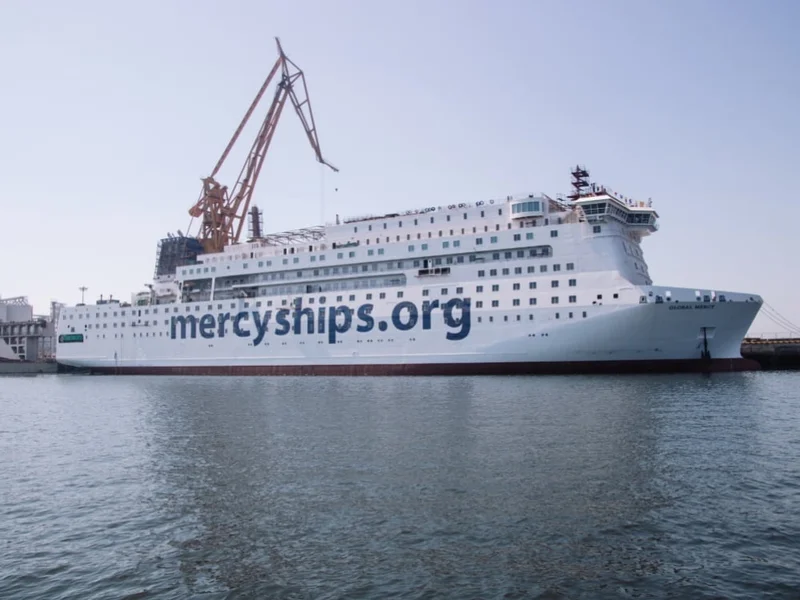Mercy Ships: The Scandal, The Truth, and If It's Even a Good Charity
Mercy Ships is Building Another Giant Hospital. Should We Be Cheering, Or Asking Tough Questions?
Alright, let's talk about "Mercy Ships." You know, the folks with the big boats that sail around doing good deeds. Sounds great on paper, right? Pure, unadulterated altruism. But then I read about them cutting steel for another massive hospital ship, the AFRICA MERCY II, and I gotta wonder if we're all just supposed to clap like seals at every press release. They had a "tree planting ceremony" to symbolize "growth, unity, and new beginnings" before they even started hacking metal. Give me a break. It's like a corporate retreat trying too hard to be profound.
Robert Corley, the COO, was there, Giuseppe Gargiulo from MSC Group, Daniela Picco from MSC Foundation – the main sponsor. See that? It’s always a parade of suits. This new behemoth is gonna be 174 meters long, 12 decks, and pack 644 volunteers. Six operating rooms, 98 acute care beds. That’s a floating city, not just a hospital. It's a sister ship to the GLOBAL MERCY, which they just got in 2021. So, how many mercy ships are there now, exactly? And what happened to the old AFRICA MERCY, the one built in 1980? Oh, it's still "operational." So, we're stacking 'em up, it seems.
The Never-Ending Fundraising Machine
Then there’s the other side of this coin: the money. Mercy Ships’ 2025 Cargo Day campaign is already pulling in over $1.6 million in pledges, aiming for a record $2.5 million by year-end. "Maritime Unity Drives Historic Fundraising for Healing Across Africa," the headline screams. Sounds noble, don't it? They've been doing this since 2016, pulling in nearly $15 million. It’s a legacy, they say, honoring the late Tim Webb, whose "vision" sparked it all. Brokers donate half their commission, charterers match it, everyone feels warm and fuzzy. According to Mercy Ships’ Cargo Day Sets Sights on Record Fundraising to Power Life-Changing Medical Missions, the Cargo Day campaign aims to raise $2.5 million by year-end.

But let’s be real. This isn't just about charity. No, scratch that – it is about charity, but the kind that makes you squint a little and ask, "Who benefits most from all this 'unity'?" Companies get recognized on the official website. It’s good PR, plain and simple. Imagine the boardroom meeting: "How can we show we're not just about profits? Ah, yes, the charity ship! Excellent optics." They talk about "thousands of free surgeries" and "medical training programs." Great. Absolutely. But what about the cost of building and running these massive, state-of-the-art floating hospitals? We're talking hundreds of millions, offcourse, and then millions more to keep them going. Are these the most efficient ways to "plant seeds for change," or just the most visible?
Big Ships, Bigger Questions
They say every dollar raised "fuels Mercy Ships’ hospital vessels." Yeah, I bet it does. Fuel ain't cheap for a 174-meter ship. And the logistics of getting hundreds of mercy ships volunteer staff from around the world to a specific point in mercy ships Africa? That's a whole other operation. They say it's about "long-term capacity building," training local healthcare workers. That’s the kind of phrase that sounds good but often lacks concrete, measurable outcomes beyond the initial feel-good stories. Does anyone actually track the long-term impact of these "seeds" once the big shiny ship sails away? I mean, really track it, not just pat themselves on the back?
I’m not saying the surgeries aren't real, or the help isn't needed. People with cataracts, cleft lips – they absolutely deserve care. But the sheer scale, the constant need for more, bigger, better, and more money makes me wonder. Is this the most sustainable model for healthcare in developing nations? Or is it a spectacular, incredibly expensive Band-Aid that makes a lot of people in the maritime industry feel good about themselves while sidestepping the deeper, systemic issues that require long-term, less glamorous investment? Sometimes I think these massive projects are more about the journey of the benefactor than the destination of the beneficiary. Then again, maybe I'm the crazy one here, asking inconvenient questions when everyone else is just happy to see a good cause get some cash.
